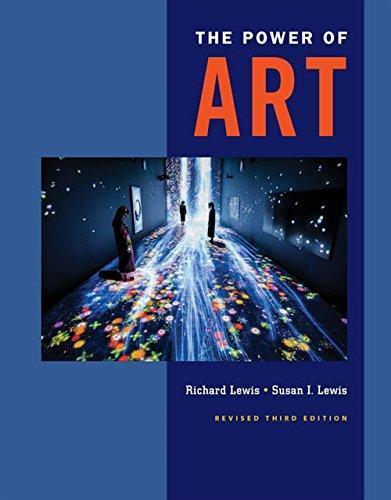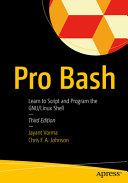Acknowledgments
WethankallourcolleaguesatEricssonforassistinginthisprojectbyhelpingwithcontributionstothe book,givingsuggestionsandcommentsonthecontent,andtakingpartinthehugeteameffortof developingLTEandthenextgenerationofradioaccessfor5G.
Thestandardizationprocessinvolvespeoplefromallpartsoftheworld,andweacknowledgethe effortsofourcolleaguesinthewirelessindustryingeneralandin3GPPRANinparticular.Without theirworkandcontributionstothestandardization,thisbookwouldnothavebeenpossible.
Finally,weareimmenselygratefultoourfamiliesforbearingwithusandsupportingusduringthe longprocessofwritingthisbook.
E-UTRANEvolvedUTRAN
EVM Errorvectormagnitude
FCC FederalCommunicationsCommission
FDD Frequencydivisionduplex
FD-MIMOFull-dimensionmultipleinput multipleoutput
FDMA Frequency-divisionmultipleaccess
FEC Forwarderrorcorrection
FeICIC Furtherenhancedintercellinterferencecoordination
FFT FastFouriertransform
FPLMTS Futurepubliclandmobiletelecommunicationssystems
FSTD Frequency-switchedtransmitdiversity
GB Guardband
GERAN GSM/EDGEradioaccessnetwork
GP Guardperiod(forTDDoperation)
GPRS Generalpacketradioservices
GPS Globalpositioningsystem
GSM Globalsystemformobilecommunications
GSMA GSMAssociation
HARQ HybridARQ
HII High-interferenceindicator
HSFN Hypersystemframenumber
HSPA High-speedpacketaccess
HSS Homesubscriberserver
ICIC Intercellinterferencecoordination
ICNIRP InternationalCommissiononNon-IonizingRadiationProtection
ICS In-channelselectivity
IEEE InstituteofElectricalandElectronicsEngineers
IFFT InversefastFouriertransform
IMT-2000InternationalMobileTelecommunications2000(ITU’snameforthefamilyof3Gstandards)
IMT-2020InternationalMobileTelecommunications2020(ITU’snameforthefamilyof5Gstandards)
IMT-AdvancedInternationalMobileTelecommunicationsAdvanced(ITU’snameforthefamilyof4G standards).
IOT Internetofthings
IP Internetprotocol
IR Incrementalredundancy
IRC Interferencerejectioncombining
ITU InternationalTelecommunicationsUnion
ITU-R InternationalTelecommunicationsUnion Radiocommunicationssector
KPI Keyperformanceindicator
LAA License-assistedaccess
LAN Localareanetwork
LBT Listenbeforetalk
LCID Logicalchannelidentifier
LDPC Low-densityparitycheckcode
LTE Long-termevolution
QPSK Quadraturephase-shiftkeying
RAB Radio-accessbearer
RACH Random-accesschannel
RAN Radio-accessnetwork
RA-RNTIRandom-accessRNTI
RAT Radio-accesstechnology
RB Resourceblock
RE Resourceelement
REG Resource-elementgroup
RF Radiofrequency
RI Rankindicator
RLAN Radiolocalareanetworks
RLC Radiolinkcontrol
RNTI Radio-networktemporaryidentifier
RNTP Relativenarrowbandtransmitpower
RoAoA Rangeofangleofarrival
ROHC Robustheadercompression
R-PDCCHRelayphysicaldownlinkcontrolchannel
RRC Radio-resourcecontrol
RRM Radioresourcemanagement
RS Referencesymbol
RSPC Radiointerfacespecifications
RSRP Referencesignalreceivedpower
RSRQ Referencesignalreceivedquality
RV Redundancyversion
RX Receiver
S1 InterfacebetweeneNodeBandtheevolvedpacketcore
S1-c Control-planepartofS1
S1-u User-planepartofS1
SAE Systemarchitectureevolution
SBCCH Sidelinkbroadcastcontrolchannel
SCG Secondarycellgroup
SCI Sidelinkcontrolinformation
SC-PTM Single-cellpointtomultipoint
SDMA Spatialdivisionmultipleaccess
SDO Standardsdevelopingorganization
SDU Servicedataunit
SEM Spectrumemissionsmask
SF Subframe
SFBC Space frequencyblockcoding
SFN Single-frequencynetwork(ingeneral,seealsoMBSFN);systemframenumber(in3GPP).
S-GW Servinggateway
SI Systeminformationmessage
SIB Systeminformationblock
SIB1-BR SIB1bandwidthreduced
SIC Successiveinterferencecombining
SIFS Shortinterframespace
SIM Subscriberidentitymodule
SINR Signal-to-interference-and-noiseratio
SIR Signal-to-interferenceratio
SI-RNTI SysteminformationRNTI
SL-BCH Sidelinkbroadcastchannel
SL-DCH Sidelinkdiscoverychannel
SLI Sidelinkidentity
SL-SCH Sidelinksharedchannel
SLSS Sidelinksynchronizationsignal
SNR Signal-to-noiseratio
SORTD Spatialorthogonal-resourcetransmitdiversity
SR Schedulingrequest
SRS Soundingreferencesignal
S-SLSS Secondarysidelinksynchronizationsignal
SSS Secondarysynchronizationsignal
STCH Sidelinktrafficchannel
STBC Space timeblockcoding
STC Space timecoding
STTD Space timetransmitdiversity
SU-MIMOSingle-userMIMO
TAB Transceiverarrayboundary
TCP Transmissioncontrolprotocol
TC-RNTI TemporaryC-RNTI
TDD Time-divisionduplex
TDMA Time-divisionmultipleaccess
TD-SCDMATime-division-synchronouscode-divisionmultipleaccess
TF Transportformat
TPC Transmitpowercontrol
TR Technicalreport
TRP Timerepetitionpattern;transmissionreceptionpoint
TRPI Timerepetitionpatternindex
TS Technicalspecification
TSDSI TelecommunicationsStandardsDevelopmentSociety,India
TSG TechnicalSpecificationGroup
TTA TelecommunicationsTechnologyAssociation
TTC TelecommunicationsTechnologyCommittee
TTI Transmissiontimeinterval
TX Transmitter
TXOP Transmissionopportunity
UCI Uplinkcontrolinformation
UE Userequipment(the3GPPnameforthemobileterminal)
UEM Unwantedemissionsmask
UL Uplink
stillvoicecentric,butthankstobeingall-digitalprovidedasignificantlyhighercapacitythan theprevious1Gsystems.Overtheyears,someoftheseearlytechnologieshavebeen extendedtoalsosupport(primitive)packetdataservices.Theseextensionsaresometimes referredtoas2.5Gtoindicatethattheyhavetheirrootsinthe2Gtechnologiesbuthavea significantlywiderrangeofcapabilitiesthantheoriginaltechnologies.EDGEisawellknownexampleofa2.5Gtechnology.GSM/EDGEisstillinwidespreaduseinsmartphonesbutisalsofrequentlyusedforsometypesofmachine-typecommunicationsuchas alarms,paymentsystems,andreal-estatemonitoring.
1.2 3GAND4G MOBILEBROADBAND
Duringthe1990s,theneedtosupportnotonlyvoicebutalsodataserviceshadstartedto emerge,drivingtheneedforanewgenerationofcellulartechnologiesgoingbeyondvoiceonlyservices.Atthistimeinthelate1990s,2GGSM,despitebeingdevelopedwithinEurope, hadalreadybecomeadefactoglobalstandard.Toensureglobalreachalsofor3Gtechnologiesitwasrealizedthatthe3Gdevelopmenthadtobecarriedoutonaglobalbasis.To facilitatethis,the Third-GenerationPartnershipProject (3GPP)wasformedtodevelopthe 3GWCDMAandTD-SCDMAtechnologies,seeChapter2forfurtherdetails.Shortlyafterward,theparallelorganization3GPP2wasformedtodevelopthecompeting3Gcdma2000 technology,anevolutionofthe2GIS-95technology.
ThefirstreleaseofWCDMA(release991)wasfinalizedin1999.Itincludedcircuitswitchedvoiceandvideoservices,anddataservicesoverbothpacket-switchedand circuit-switchedbearers.
ThefirstmajorenhancementstoWCDMAcamewiththeintroductionof HighSpeed DownlinkPacketAccess (HSDPA)inrelease5followedby EnhancedUplinkinrelease6, collectivelyknownas HighSpeedPacketAccess(HSPA) [61].HSPA,sometimesreferredto as3.5G,allowedfora“true”mobile-broadbandexperiencewithdataratesofseveralMbit/s whilemaintainingthecompatibilitywiththeoriginal3Gspecifications.Withthesupportfor mobilebroadband,thefoundationfortherapiduptakeofsmartphonessuchastheiPhoneand thewiderangeofAndroiddeviceswereinplace.Withoutthewideavailabilityofmobile broadbandforthemassmarket,theuptakeofsmartphoneusagewouldhavebeensignificantlyslowerandtheirusabilityseverelylimited.Atthesametime,themassiveuseofsmart phonesandawiderangeofpacket-data-basedservicessuchassocialnetworking,video, gaming,andonlineshoppingtranslatesintorequirementsonincreasedcapacityandimproved spectralefficiency.Usersgettingmoreandmoreusedtomobileservicesalsoraisetheir expectationsintermsofexperiencingincreaseddataratesandreducedlatency.Theseneeds
1Forhistoricalreasons,thefirst3GPPreleaseisnamedaftertheyearitwasfrozen(1999),whilethefollowingreleasesare numbered4,5,6,andsoon.
werepartlyhandledbyacontinuous,andstillongoing,evolutionofHSPA,butitalsotriggeredthediscussionson4Gtechnologyinthemid-2000s.
The4GLTEtechnologywasfromthebeginningdevelopedforpacket-datasupportand hasnosupportforcircuit-switchedvoice,unlikethe3GwhereHSPAwasan“add-on”to providehigh-performancepacketdataontopofanexistingtechnology.Mobilebroadband serviceswerethefocus,withtoughrequirementsonhighdatarates,lowlatency,andhigh capacity.SpectrumflexibilityandmaximumcommonalitybetweenFDDandTDDsolutions wereotherimportantrequirements.Anewcorenetworkarchitecturewasalsodeveloped, knownas EnhancedPacketCore (EPC),toreplacethearchitectureusedbyGSMand WCDMA/HSPA.ThefirstversionofLTEwaspartofrelease8ofthe3GPPspecificationsand thefirstcommercialdeploymenttookplaceinlate2009,followedbyarapidandworldwide deploymentofLTEnetworks.
OnesignificantaspectofLTEistheworldwideacceptanceofasingletechnology,unlike previousgenerationsforwhichtherehasbeenseveralcompetingtechnologies,see Figure1.2. Havingasingle,universallyacceptedtechnologyacceleratesdevelopmentofnewservices andreducesthecostforbothusersandnetworkoperators.
Sinceitscommercialintroductionin2009,LTEhasevolvedconsiderablyintermsofdata rates,capacity,spectrumanddeploymentflexibility,andapplicationrange.Frommacrocentricdeploymentswithpeakdataratesof300Mbit/sin20MHzofcontiguous,licensed spectrum,theevolutionofLTEcaninrelease13supportmulti-Gbit/speakdataratesthrough improvementsintermsofantennatechnologies,multisitecoordination,exploitationof fragmentedaswellasunlicensedspectrumanddensifieddeploymentsjusttomentionafew areas.TheevolutionofLTEhasalsoconsiderablywidenedtheusecasesbeyondmobile broadbandby,forexample,improvingsupportformassivemachine-typecommunicationand introducingdirectdevice-to-devicecommunication.
1.3 5G BEYONDMOBILEBROADBAND NETWORKEDSOCIETY
AlthoughLTEisstillatarelativelyearlystageofdeployment,theindustryisalreadywellon theroadtowardsthenextgenerationofmobilecommunication,commonlyreferredtoasfifth generationor5G.
Mobilebroadbandis,andwillcontinuetobe,animportantpartoffuturecellular communication,butfuturewirelessnetworksaretoalargeextentalsoaboutasignificantly widerrangeofusecases.Inessence,5Gshouldbeseenasaplatformenablingwireless connectivitytoallkindsofservices,existingaswellasfuturenot-yet-knownservicesand therebytakingwirelessnetworksbeyondmobilebroadband.Connectivitywillbeprovided essentiallyanywhere,anytimetoanyoneandanything.Theterm networkedsociety is sometimesusedwhenreferringtosuchascenariowhereconnectivitygoesbeyondmobile smartphones,havingaprofoundimpactonthesociety.
Massivemachine-typecommunication,exemplifiedbysensornetworksinagriculture, trafficmonitoring,andremotemanagementofutilityequipmentinbuildings,isonetypeof non-mobile-broadbandapplications.Theseapplicationsprimarilyputrequirementsonvery lowdevicepowerconsumptionwhilethedataratesandamountsofdataperdeviceare modest.ManyoftheseapplicationscanalreadybesupportedbytheLTEevolution.
Anotherexampleofnon-mobile-broadbandapplicationsare ultra-reliableandlowlatencycommunications (URLLC),alsoknownascriticalmachine-typecommunication. Exampleshereofareindustrialautomation,wherelatencyandreliabilityrequirementsare verystrict.Vehicle-to-vehiclecommunicationfortrafficsafetyisanotherexample.
Nevertheless,mobilebroadbandwillremainanimportantusecaseandtheamountof trafficinwirelessnetworksisincreasingrapidly,asistheuserexpectationondatarates, availability,andlatency.Theseenhancedrequirementsalsoneedtobeaddressedby5G wirelessnetworks.
Increasingthecapacitycanbedoneinthreeways:improvedspectralefficiency,densified deployments,andanincreasedamountofspectrum.ThespectralefficiencyofLTEisalready highandalthoughimprovementscanbemade,itisnotsufficienttomeetthetrafficincrease. Networkdensificationisalsoexpectedtohappen,notonlyfromacapacityperspective,but alsofromahigh-data-rate-availabilitypointofview,andcanprovideaconsiderableincrease incapacityalthoughatthecostoffindingadditionalantennasites.Increasingtheamountof spectrumwillhelp,butunfortunately,theamountofnot-yet-exploitedspectrumintypical cellularbands,uptoabout3GHz,islimitedandfairlysmall.Therefore,theattentionhas increasedtosomewhathigherfrequencybands,bothinthe3 6GHzrangebutalsointhe range6 30GHzandbeyondforwhichLTEisnotdesigned,asawaytoaccessadditional spectrum.However,asthepropagationconditionsinhigherfrequencybandsareless favorableforwide-areacoverageandrequiremoreadvancedantennatechniquessuchas beamforming,thesebandscanmainlyserveasacomplementtotheexisting,lower-frequency bands.
Asseenfromthediscussionearlier,therangeofrequirementsfor5Gwirelessnetworks areverywide,callingforahighdegreeofnetworkflexibility.Furthermore,asmanyfuture
Regulatorybodiesandadministrations aregovernment-ledorganizationsthatsetregulatoryandlegalrequirementsforselling,deploying,andoperatingmobilesystemsandother telecommunicationproducts.Oneoftheirmostimportanttasksistocontrolspectrumuseand tosetlicensingconditionsforthemobileoperatorsthatareawardedlicensestousepartsof theradiofrequency(RF)spectrumformobileoperations.Anothertaskistoregulate“placing onthemarket”ofproductsthroughregulatorycertification,byensuringthatdevices,base stations,andotherequipmentistypeapprovedandshowntomeettherelevantregulation.
Spectrumregulationishandledbothonanationallevelbynationaladministrations,but alsothroughregionalbodiesinEurope(CEPT/ECC),Americas(CITEL),andAsia(APT). Onagloballevel,thespectrumregulationishandledbythe InternationalTelecommunicationsUnion (ITU).Theregulatorybodiesregulatewhatservicesthespectrumistobeusedfor andalsosetmoredetailedrequirementssuchaslimitsonunwantedemissionsfromtransmitters.Theyarealsoindirectlyinvolvedinsettingrequirementsontheproductstandards throughregulation.TheinvolvementofITUinsettingrequirementsonthetechnologiesfor mobilecommunicationisexplainedfurtherin Section2.2.
Industryforums areindustryleadgroupspromotingandlobbyingforspecifictechnologies orotherinterests.Inthemobileindustry,theseareoftenledbyoperators,buttherearealso vendorscreatingindustryforums.AnexampleofsuchagroupisGSMA(GSMassociation) whichispromotingmobile-communicationtechnologiesbasedonGSM,WCDMA,andLTE. Otherexamplesofindustryforumsare Next-GenerationMobileNetworks (NGMN)whichis anoperatorgroupdefiningrequirementsontheevolutionofmobilesystemsand 5GAmericas, whichisaregionalindustryforumthathasevolvedfromitspredecessor4GAmericas.
Figure2.1 illustratestherelationbetweendifferentorganizationsinvolvedinsetting regulatoryandtechnicalconditionsformobilesystems.Thefigurealsoshowsthemobile industryview,wherevendorsdevelopproducts,placethemonthemarketandnegotiatewith operatorswhoprocureanddeploymobilesystems.ThisprocessreliesheavilyonthetechnicalstandardspublishedbytheSDOs,whileplacingproductsonthemarketalsorelieson certificationofproductsonaregionalornationallevel.NotethatinEurope,theregionalSDO (ETSI)isproducingtheso-called Harmonizedstandards usedforproductcertification (throughthe“CE”mark),basedonamandatefromtheregulators.Thesestandardsareused forcertificationinmanycountriesalsooutsideofEurope.
2.2 ITU-RACTIVITIESFROM3GTO5G
2.2.1 THEROLEOFITU-R
ITU-RistheradiocommunicationssectoroftheITU.ITU-Risresponsibleforensuring efficientandeconomicaluseoftheRFspectrumbyallradiocommunicationservices.The differentsubgroupsandworkingpartiesproducereportsandrecommendationsthatanalyze anddefinetheconditionsforusingtheRFspectrum.ThegoalofITU-Risto“ensure interference-freeoperationsofradiocommunicationsystems,”byimplementingthe Radio
Mobile industry view:
Simplifiedviewofrelationbetweenregulatorybodies,standardsdevelopingorganizations,industryforums, andthemobileindustry.
Regulations andregionalagreements.TheRadioRegulationsisaninternationalbinding treatyforhowRFspectrumisused.A WorldRadiocommunicationConference (WRC)isheld every3 4years.AtWRCtheRadioRegulationsarerevisedandupdatedandinthatway providerevisedandupdateduseofRFspectrumacrosstheworld.
Whilethetechnicalspecificationofmobile-communicationtechnologies,suchasLTEand WCDMA/HSPAisdonewithin3GPP,thereisaresponsibilityforITU-Rintheprocessof turningthetechnologiesintoglobalstandards,inparticularforcountriesthatarenotcovered bytheSDOsarepartnersin3GPP.ITU-RdefinesspectrumfordifferentservicesintheRF spectrum,includingmobileservicesandsomeofthatspectrumisparticularlyidentifiedfor theso-calledInternationalMobileTelecommunications(IMT)systems.WithinITU-R,itis WorkingParty5D (WP5D)thathastheresponsibilityfortheoverallradiosystemaspectsof IMTsystems,which,inpractice,correspondstothedifferentgenerationsofmobilecommunicationsystemsfrom3Gandonward.WP5Dhastheprimeresponsibilitywithin ITU-RforissuesrelatedtotheterrestrialcomponentofIMT,includingtechnical,operational, andspectrum-relatedissues.
WP5DdoesnotcreatetheactualtechnicalspecificationsforIMT,buthaskepttherolesof definingIMTincooperationwiththeregionalstandardizationbodiesandmaintainingasetof recommendationsandreportsforIMT,includingasetof RadioInterfaceSpecifications (RSPC).Theserecommendationscontain“families”of radiointerfacetechnologies
Product Vendor
FIGURE2.1
IMT,lookingatthefuturerolesofIMTandhowitcanservesociety,lookingatmarket,user andtechnologytrends,andspectrumimplications.TheusertrendsforIMTtogetherwiththe futureroleandmarketleadstoasetofusagescenariosenvisionedforbothhuman-centricand machine-centriccommunication.Theusagescenariosidentifiedare EnhancedMobile Broadband (eMBB), Ultra-ReliableandLowLatencyCommunications (URLLC),and MassiveMachine-TypeCommunications (MTC).
TheneedforanenhancedMBBexperience,togetherwiththenewandbroadenedusage scenarios,leadstoanextendedsetofcapabilitiesforIMT-2020.TheVisionrecommendation [63]givesafirsthigh-levelguidanceforIMT-2020requirementsbyintroducingasetof keycapabilities,withindicativetargetnumbers.Thekeycapabilitiesandtherelatedusage scenariosarefurtherdiscussedinChapter23.
Asaparallelactivity,ITU-RWP5Dproducedareporton“Futuretechnologytrendsof terrestrialIMTsystems”[64],withfocusonthetimeperiod2015 2020.Itcoverstrendsof futureIMTtechnologyaspectsbylookingatthetechnicalandoperationalcharacteristics ofIMTsystemsandhowtheyareimprovedwiththeevolutionofIMTtechnologies.Inthis way,thereportontechnologytrendsrelatetoLTErelease13andbeyond,whilethevision recommendationlooksfurtheraheadandbeyond2020.Areportstudyingoperationinfrequenciesabove6GHzwasalsoproduced.Chapter24discussessomeofthetechnology componentsconsideredforthenew5Gradioaccess.
AfterWRC-15,ITU-RWP5Disin2016initiatingtheprocessofsettingrequirementsand definingevaluationmethodologiesforIMT-2020systems.Theprocesswillcontinueuntil mid-2017,asshownin Figure2.4.Inaparalleleffort,atemplateforsubmittinganevaluation
ofcandidateRITswillbecreated.Externalorganizationsarebeinginformedoftheprocess throughacircularletter.AfteraworkshoponIMT-2020isheldin2017,theplanistostartthe evaluationofproposals,aimingatanoutcomewiththeRSPCforIMT-2020beingpublished earlyin2020.
ThecomingevaluationofcandidateRITsforIMT-2020inITU-Risexpectedtobe conductedinawaysimilartotheevaluationdoneforIMT-Advanced,wheretherequirements weredocumentedinRecommendationITU-RM.2134[28]andthedetailedevaluation methodologyinRecommendationITU-RM.2135[52].Theevaluationwillbefocusedonthe keycapabilitiesidentifiedintheVISIONrecommendation[63],butwillalsoincludeother technicalperformancerequirements.Therearethreefundamentalwaysthatrequirementsare evaluatedforacandidatetechnology:
• Simulation:Thisisthemostelaboratewaytoevaluatearequirementanditinvolves system-orlink-levelsimulations,orboth,oftheRIT.Forsystem-levelsimulations, deploymentscenariosaredefinedthatcorrespondtoasetoftestenvironments,suchas IndoorandDenseUrban.Requirementsthatarecandidatesforevaluationthrough simulationareforexamplespectrumefficiencyanduser-experienceddatarate(for detailsonthekeycapabilities,seeChapter23).
• Analysis:Somerequirementscanbeevaluatedthroughacalculationbasedonradio interfaceparameters.Thisappliesforexampleincaseofrequirementsonpeakdatarate andlatency.
• Inspection:Somerequirementscanbeevaluatedbyreviewingandassessingthe functionalityoftheRIT.Examplesofparametersthatmaybesubjecttoinspectionare bandwidth,handoverfunctionality,andsupportofservices.
Oncethetechnicalperformancerequirementsandevaluationmethodologyaresetup,the evaluationphasestarts.Evaluationcanbedonebytheproponent(“self-evaluation”)orbyan externalevaluationgroup,doingpartialorcompleteevaluationofoneormorecandidate proposals.
2.3 SPECTRUMFORMOBILESYSTEMS
ThereareanumberoffrequencybandsidentifiedformobileuseandspecificallyforIMT today.ManyofthesebandswerefirstdefinedforoperationwithWCDMA/HSPA,butarenow sharedalsowithLTEdeployments.Notethatinthe3GPPspecificationsWCDMA/HSPAis referredtoas UniversalTerrestrialRadioAccess (UTRA),whileLTEisreferredtoas EnhancedUTRA (E-UTRA).
NewbandsaretodayoftendefinedonlyforLTE.Bothpairedbands,whereseparated frequencyrangesareassignedforuplinkanddownlink,andunpairedbandswithasingle sharedfrequencyrangeforuplinkanddownlink,areincludedintheLTEspecifications. PairedbandsareusedforFrequencyDivisionDuplex(FDD)operation,whileunpairedbands
usedfor2Gmobilesystemsat806 960and1710 1885MHz,and“new”3Gspectruminthe bandsat2500 2690MHz.Theidentificationofbandspreviouslyassignedfor2Gwasalso recognitionoftheevolutionofexisting2Gmobilesystemsinto3G.Additionalspectrumwas identifiedatWRC’07forIMT,encompassingbothIMT-2000andIMT-Advanced.Thebands addedwere450 470,698 806,2300 2400,and3400 3600MHz,buttheapplicabilityof thebandsvariesonaregionalandnationalbasis.AtWRC’12therewerenoadditional spectrumallocationsidentifiedforIMT,buttheissuewasputontheagendaforWRC’15. Itwasalsodeterminedtostudytheuseoftheband694 790MHzformobileservicesin Region1(Europe,MiddleEast,andAfrica).
Thesomewhatdivergingarrangementbetweenregionsofthefrequencybandsassignedto IMTmeansthatthereisnotonesinglebandthatcanbeusedfor3Gand4Groaming worldwide.Largeeffortshave,however,beenputintodefiningaminimumsetofbandsthat canbeusedtoprovidetrulyglobalroaming.Inthisway,multibanddevicescanprovide efficientworldwideroamingfor3Gand4Gdevices.
2.3.2 FREQUENCYBANDSFORLTE
LTEcanbedeployedbothinexistingIMTbandsandinfuturebandsthatmaybeidentified. Thepossibilityofoperatingaradioaccesstechnologyindifferentfrequencybandsis,in itself,nothingnew.Forexample,2Gand3Gdevicesaremultibandcapable,coveringbands usedinthedifferentregionsoftheworldtoprovideglobalroaming.Fromaradioaccess functionalityperspective,thishasnoorlimitedimpactandthephysicallayerspecifications suchastheonesforLTE[24 27]donotassumeanyspecificfrequencyband.Whatmay differ,intermsofspecification,betweendifferentbandsaremainlythemorespecificRF requirements,suchastheallowedmaximumtransmitpower,requirements/limitsonoutof-band(OOB)emission,andsoon.Onereasonforthisisthatexternalconstraints, imposedbyregulatorybodies,maydifferbetweendifferentfrequencybands.
ThefrequencybandswhereLTEwilloperateareinbothpairedandunpairedspectrum, requiringflexibilityintheduplexarrangement.Forthisreason,LTEsupportsbothFDDand TDDoperation,willbediscussedlater.
Release13ofthe3GPPspecificationsforLTEincludes32frequencybandsforFDDand12 forTDD.Thenumberofbandsisverylargeandforthisreason,thenumberingschemerecently hadtoberevisedtobecomefutureproofandaccommodatemorebands.Thepairedbandsfor FDDoperationarenumberedfrom1to32and65to66[38],asshownin Table2.1,whilethe unpairedbandsforTDDoperationarenumberedfrom33to46,asshownin Table2.2.Note thatthefrequencybandsdefinedforUTRAFDDusethesamenumbersasthepairedLTE bands,butarelabeledwithRomannumerals.Bands15and16arereservedfordefinitionin Europe,butarepresentlynotused.AllbandsforLTEaresummarizedin Figures2.5and2.6, whichalsoshowthecorrespondingfrequencyallocationdefinedbytheITU-R.
Someofthefrequencybandsarepartlyorfullyoverlapping.Inmostcasesthisis explainedbyregionaldifferencesinhowthebandsdefinedbytheITU-Rareimplemented.At










